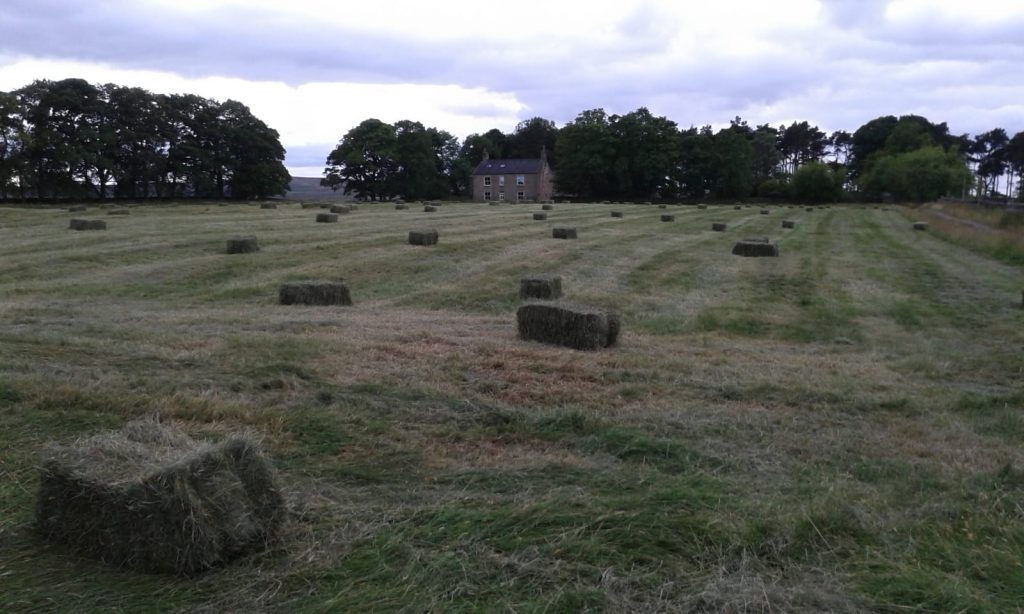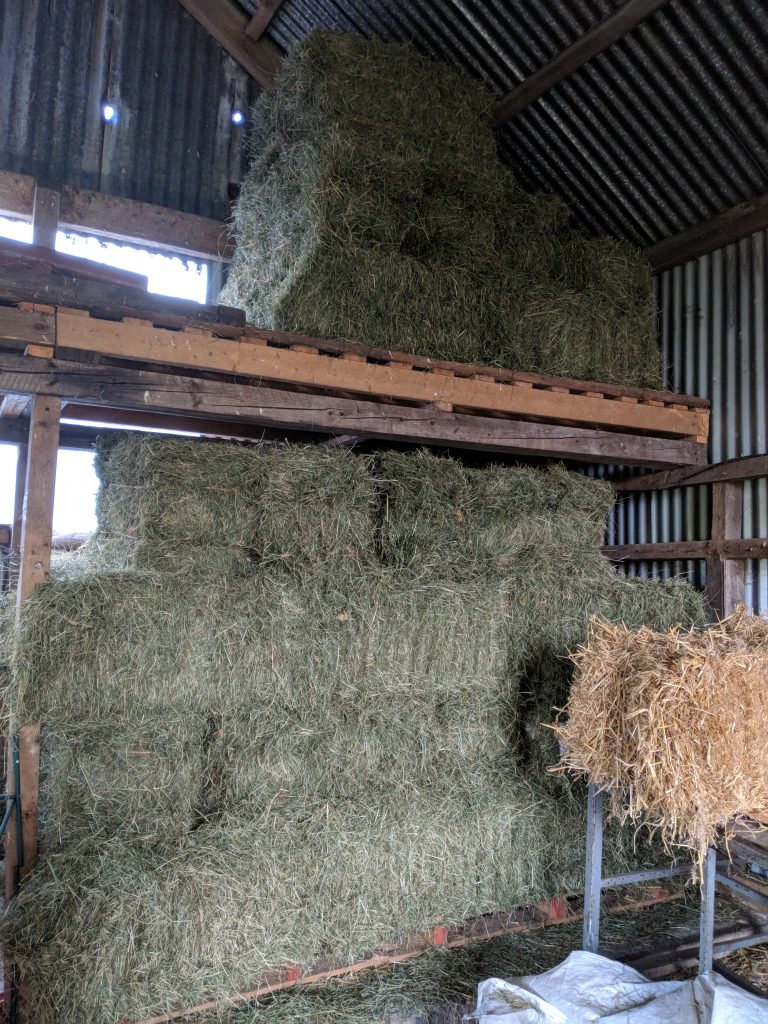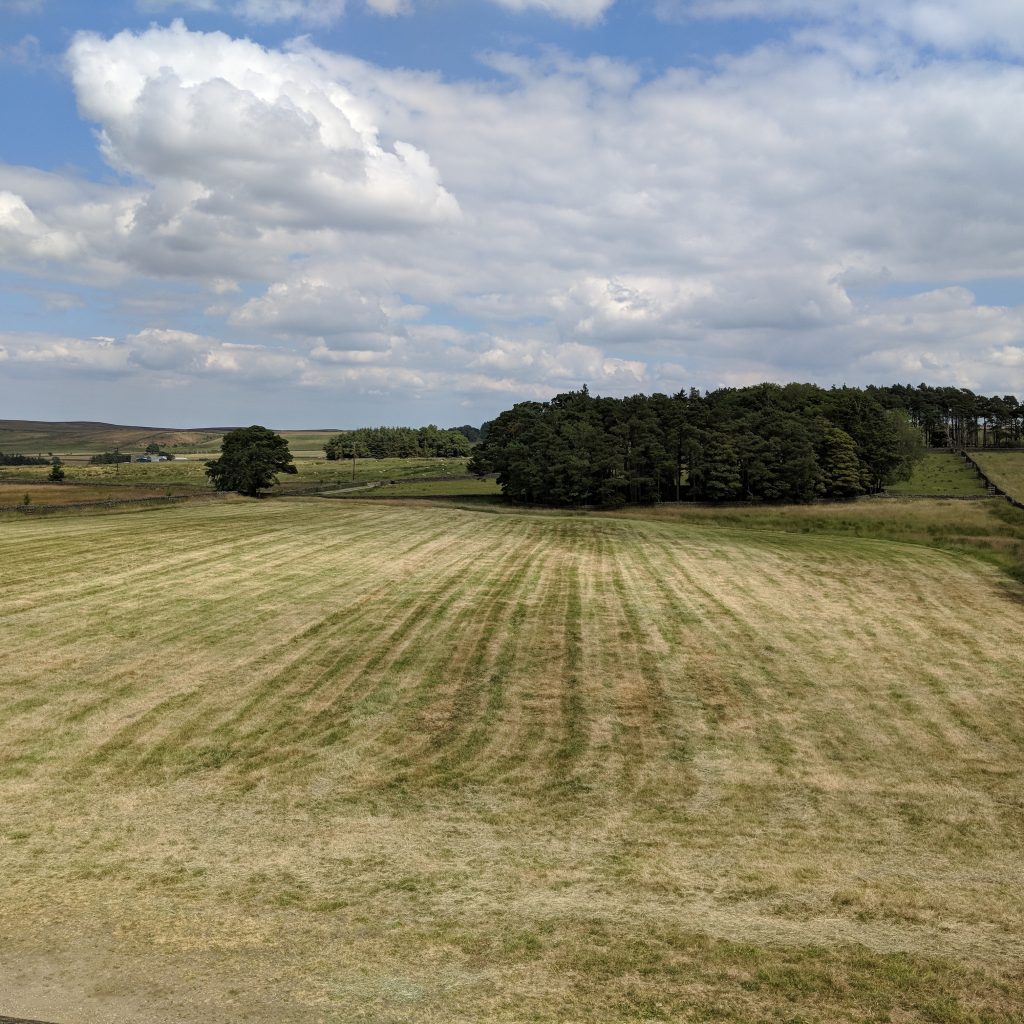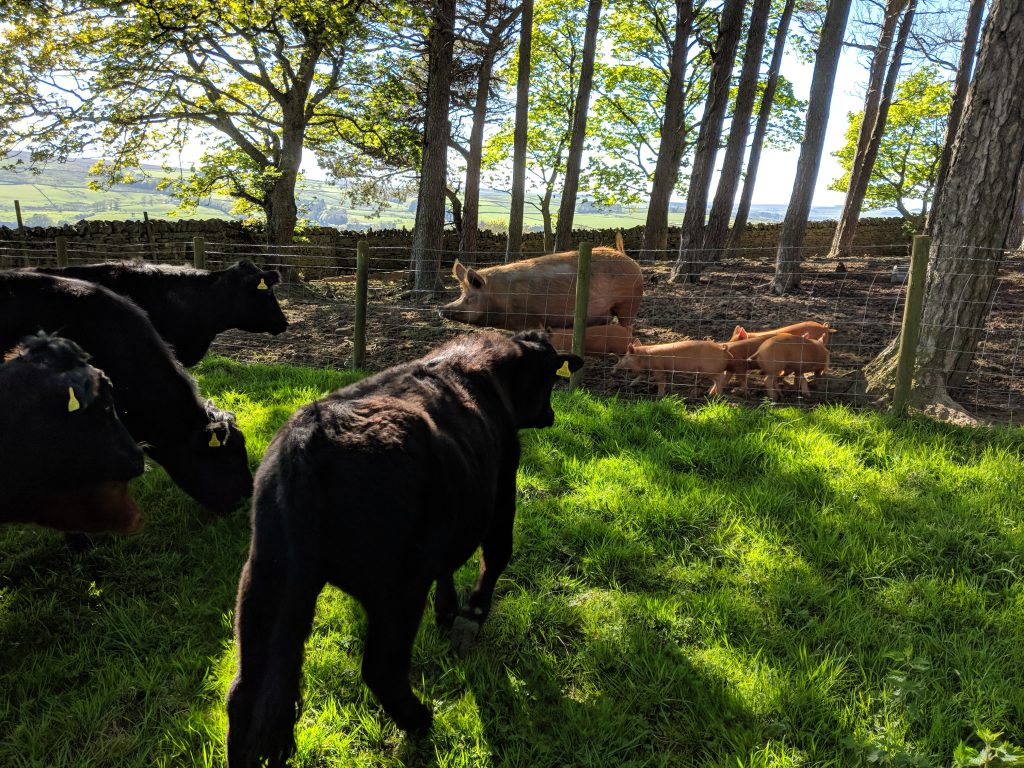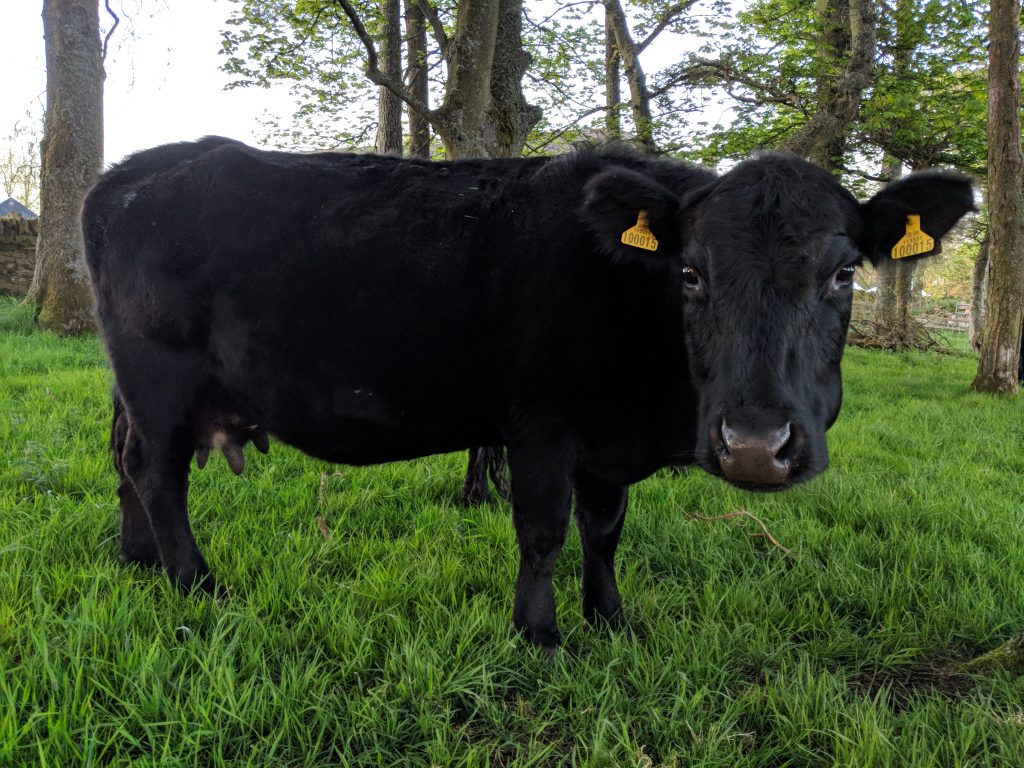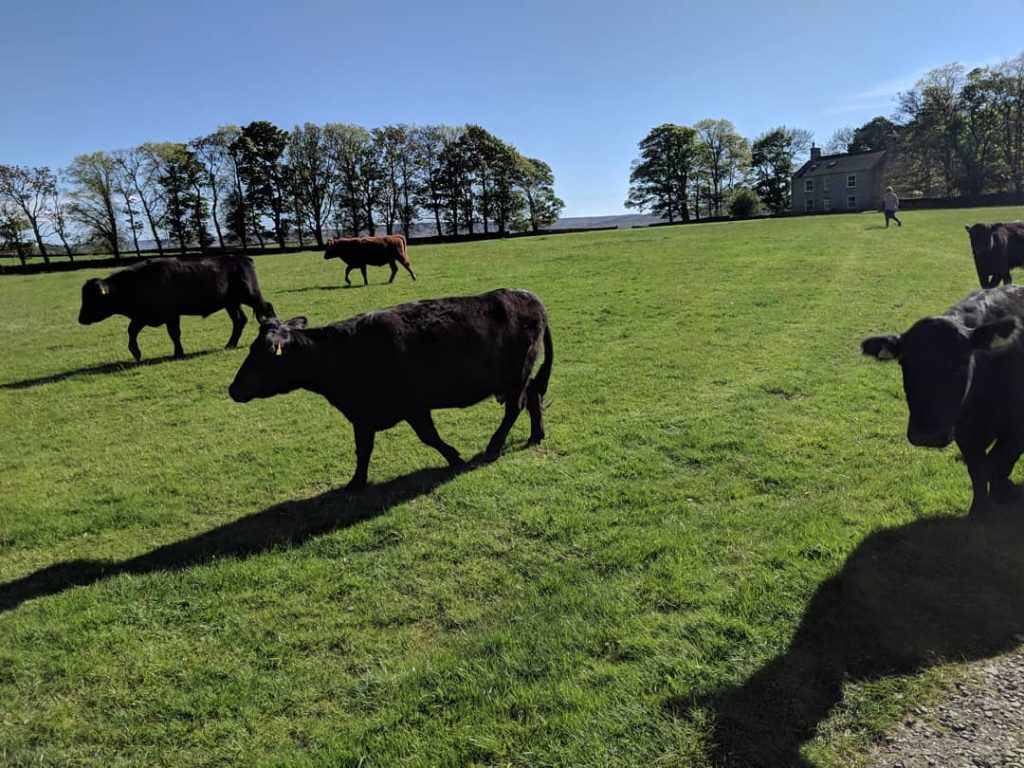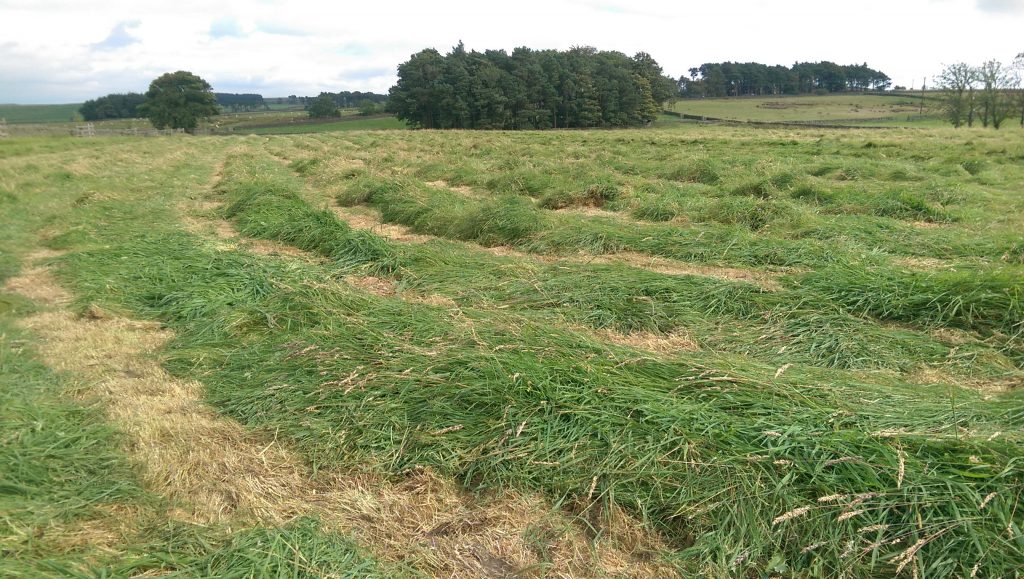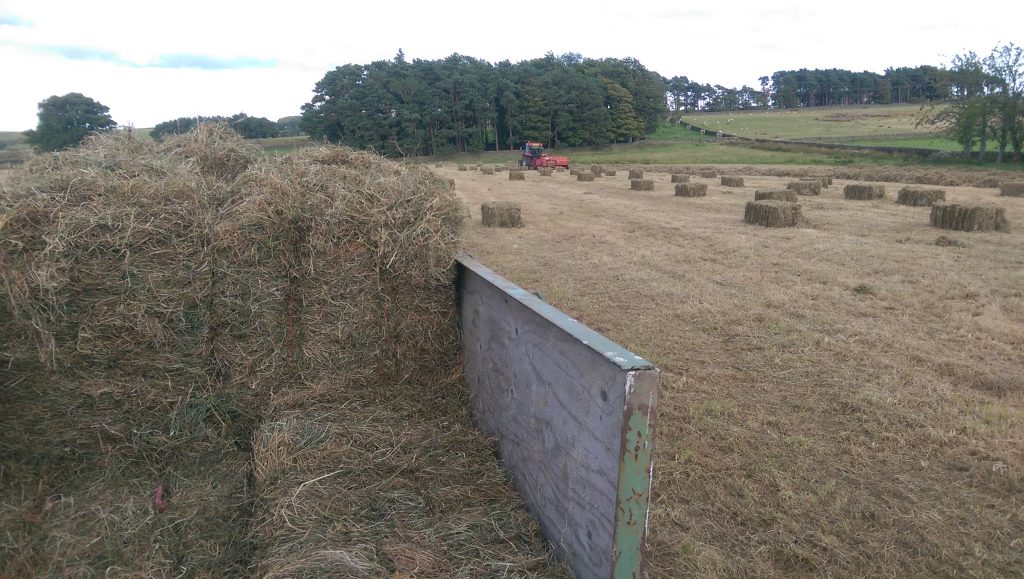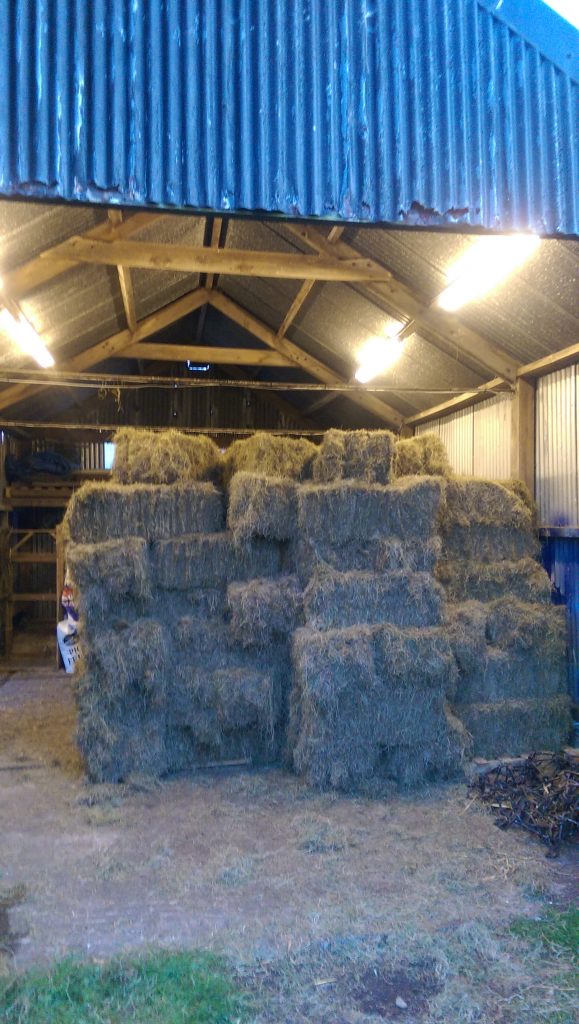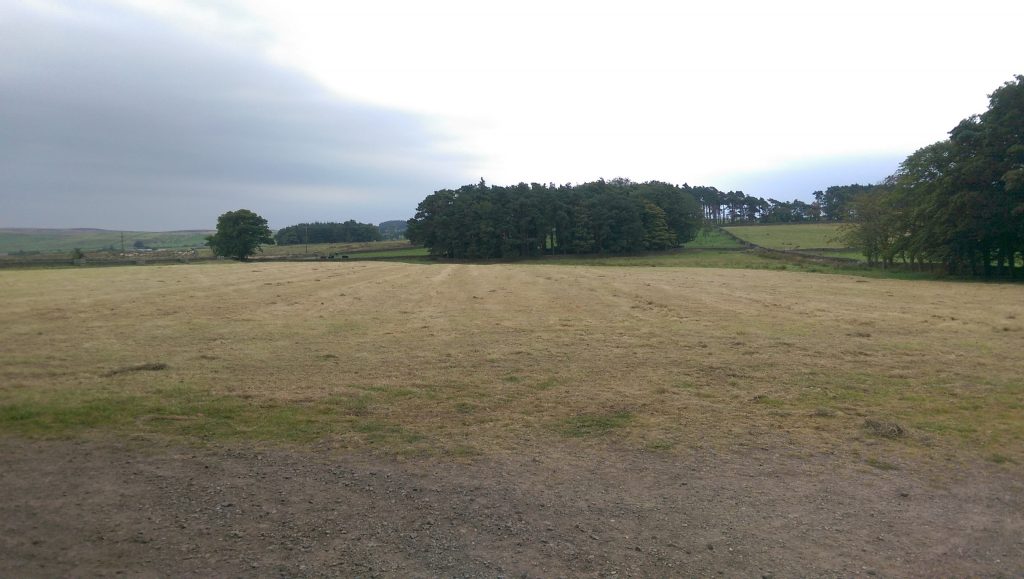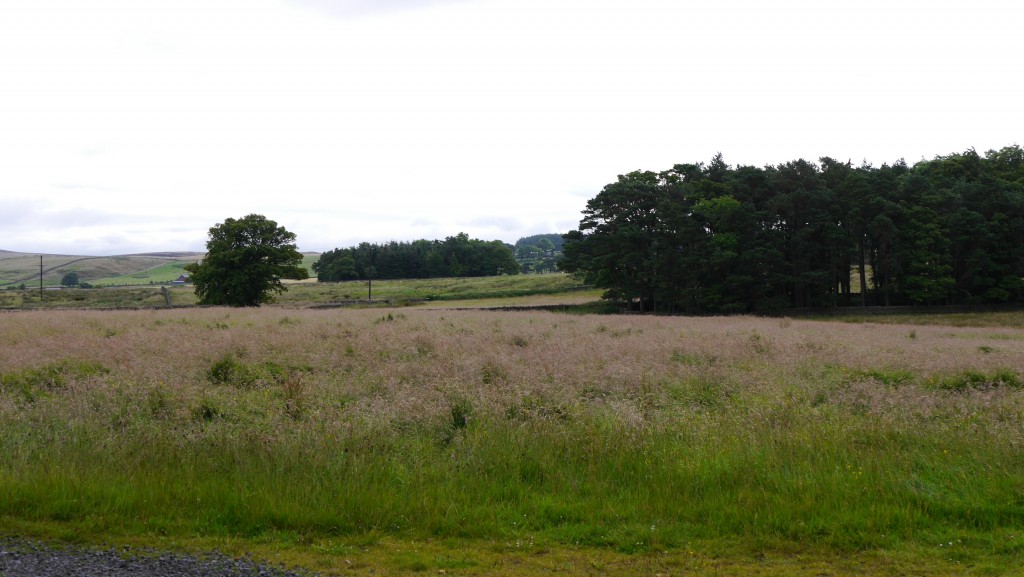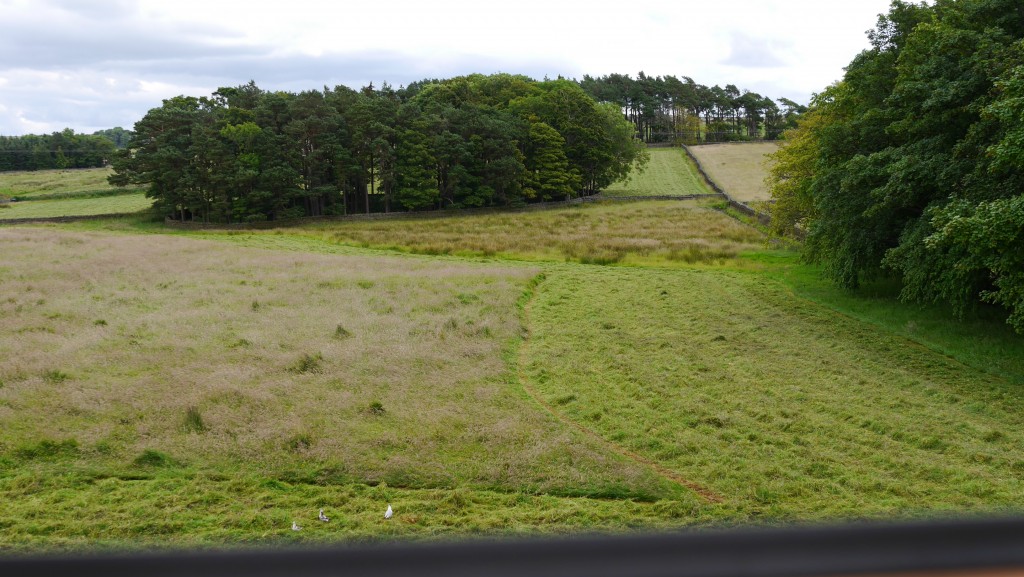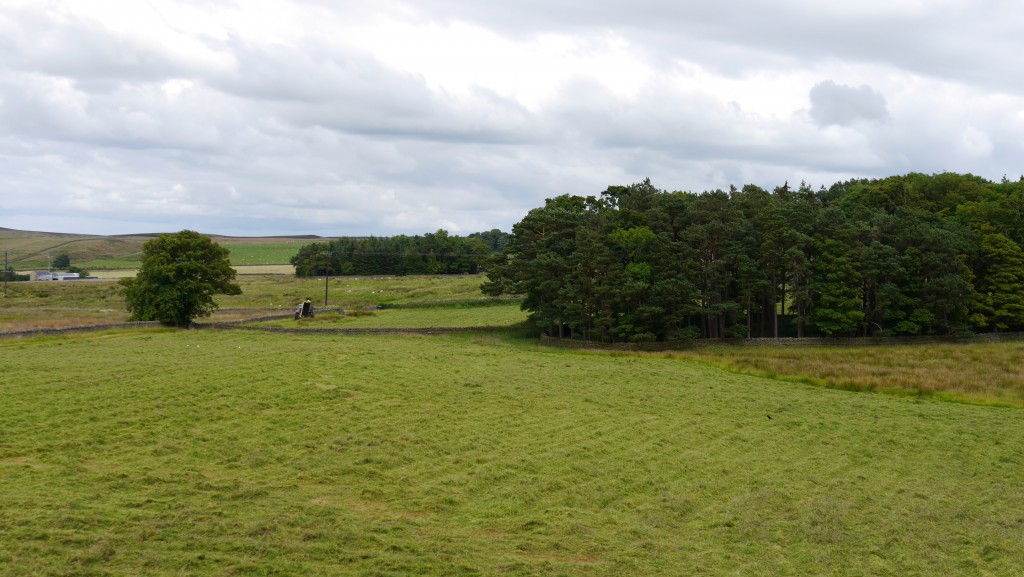At first I wasn’t sure that we’d made the right choice when I saw our neighbours had cut and baled their hay meadows early in July. However we wanted to wait a little longer so that the wild flowers could properly set seed before it was cut.
There were a few occasions when I wished we’d cut earlier and I’m still not completely used to the tense times around some of the activities on a smallholding. I’m sure it’ll eventually become second nature but even now after 6 years they can be nerve-wracking times.
In the end, our neighbour came to cut our little (4 acre) meadow on Tues 23 July with the weather forecast looking vaguely suitable to my untrained eye. I don’t usually take the forecasts too seriously as it changes regularly but it’s the best indicator I’ve got for what may be coming.
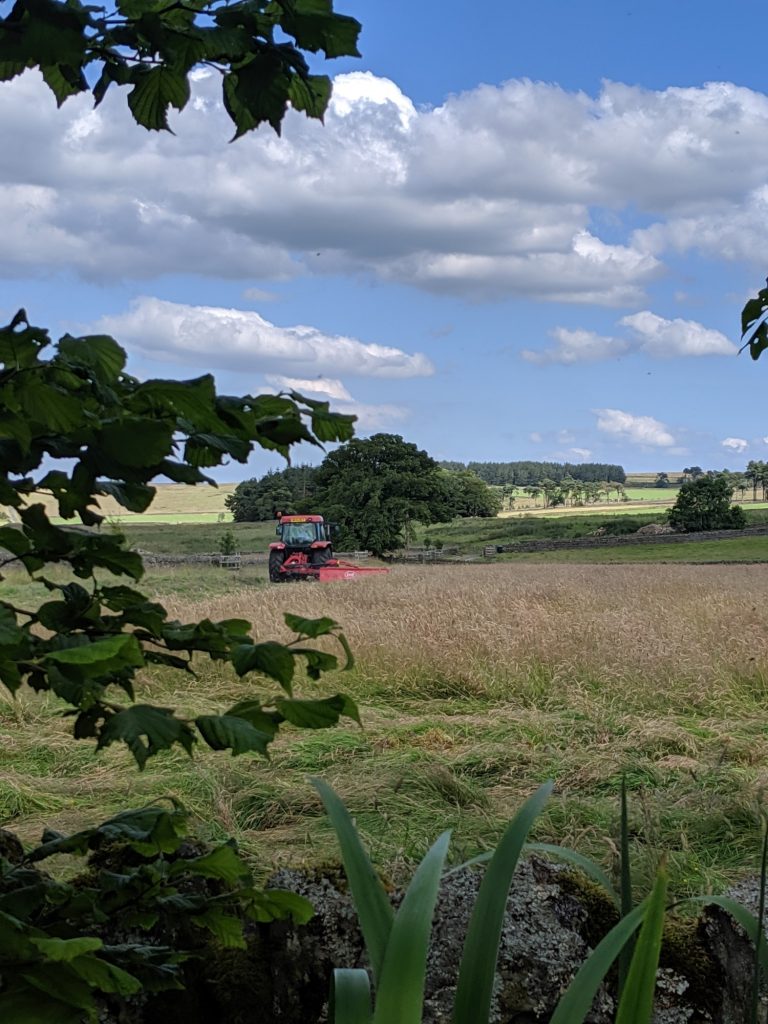
Unfortunately 2 days later there were some overnight thunder showers which set everything back a bit. A real shame because it looked like the grass was drying out nicely up until that point.
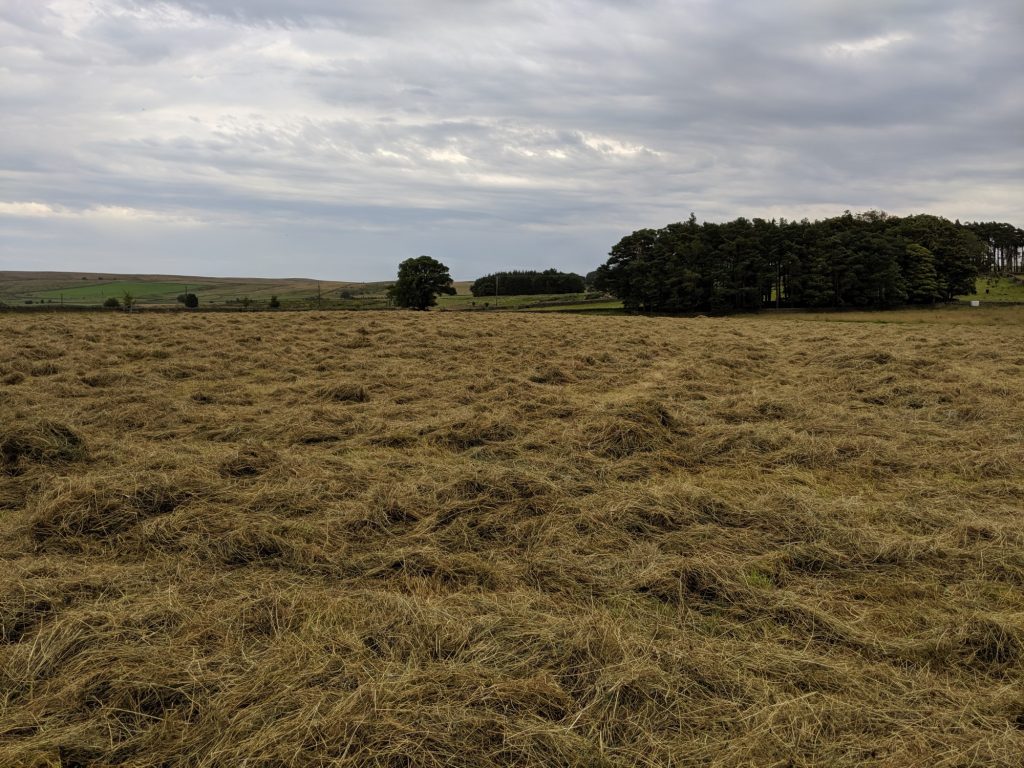
Still, when that happens there isn’t much you can do other than wait for a long enough period of decent weather. So we waited…. and waited…. but after a week or so it became clear that we’d never get the grass dry enough for small square bales as we’d originally wanted.
Finally we had a couple of fairly fine, breezy days predicted and made the decision to get the whole lot baled and wrapped as big round bales. So it was that on Sat 3 August the guys with all the right equipment got to work

It was 11 days from when the grass was first cut before the crop was finally baled but very reassuring to know that it was finally protected. Since that point we’ve not even had a dry enough spell for all the bales to be moved round to their storage point though.
The bales will get moved in the end but it’s better not to be running big heavy tractors around over our water logged ground at the moment. Not that they are likely to get stuck, just that they’d leave too much mess if they tried
I know that some other smallholders didn’t manage to get hay made in time and it looks like August is due to be a bit of a washout. I’m currently predicting that this may even be the wettest August for some time.
